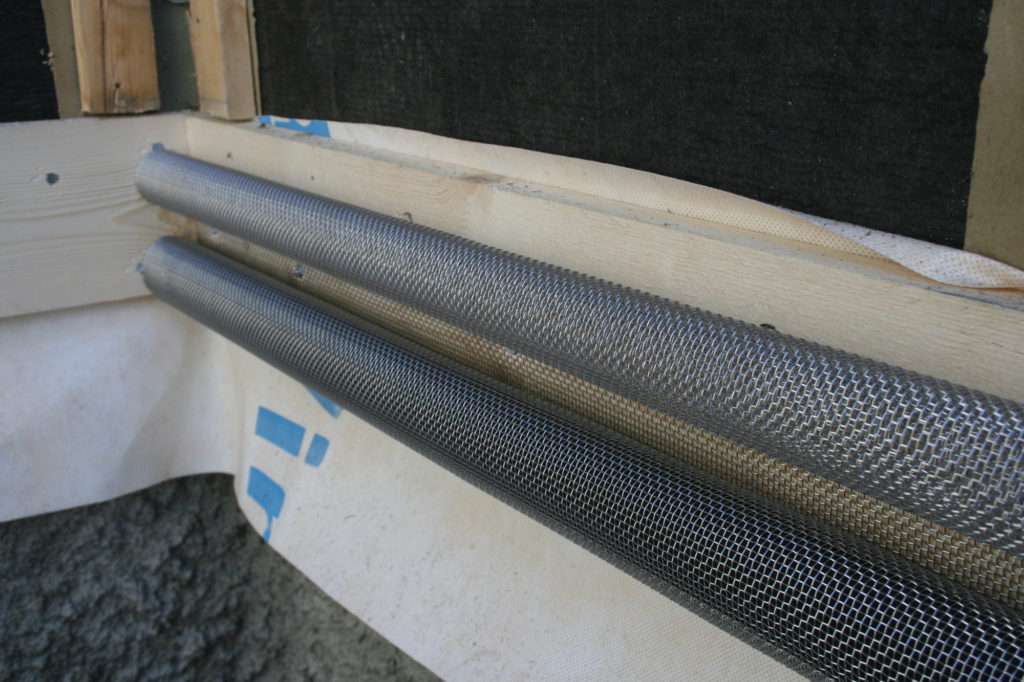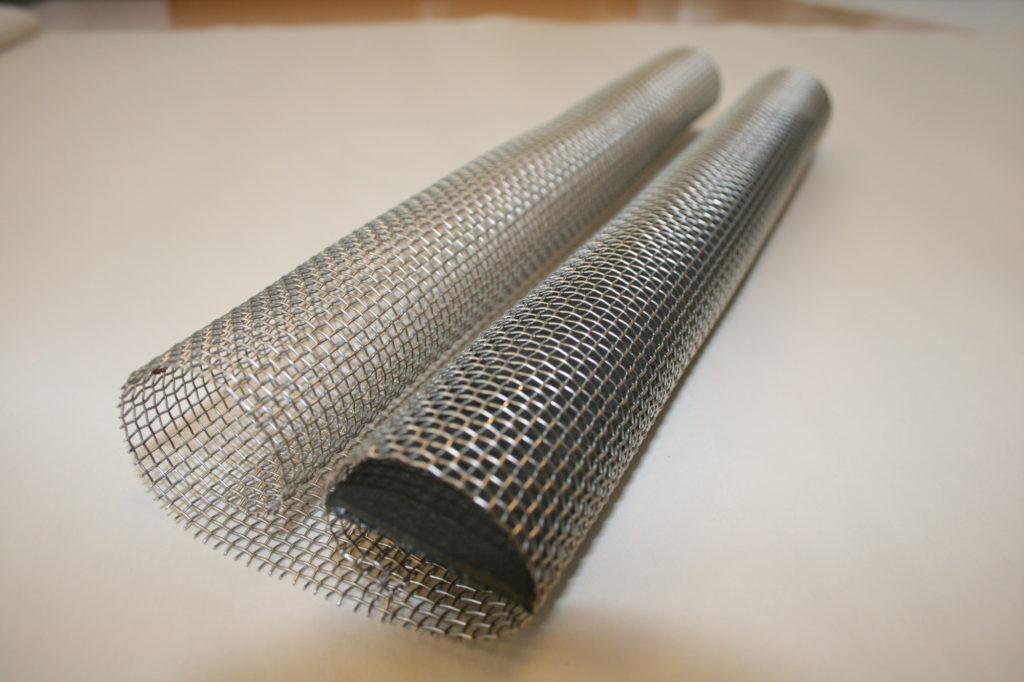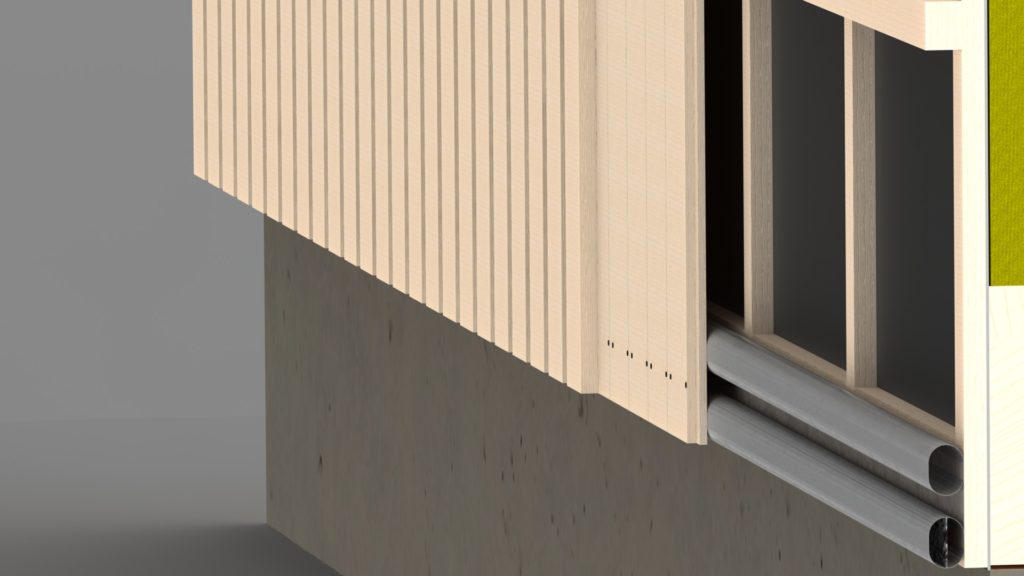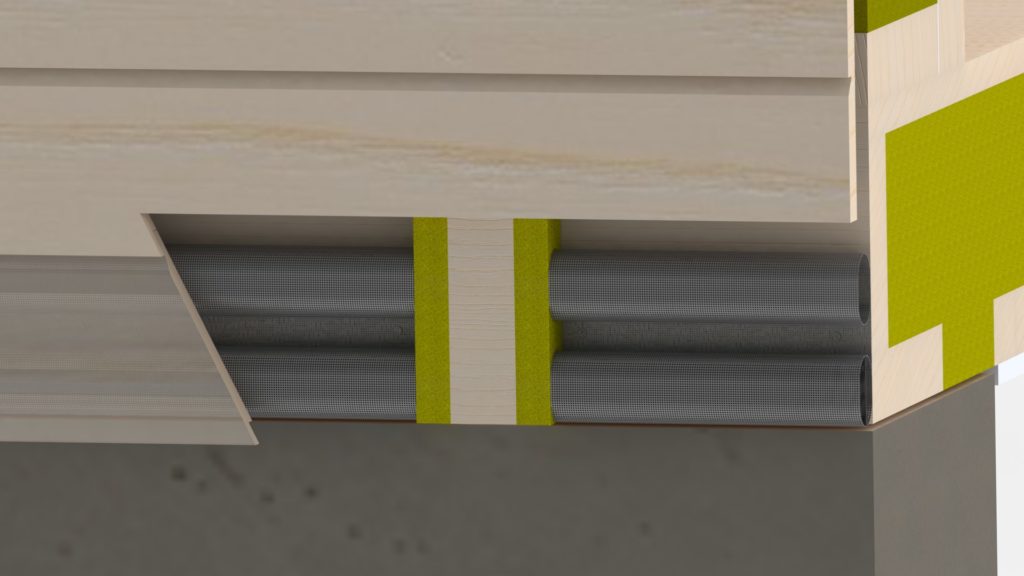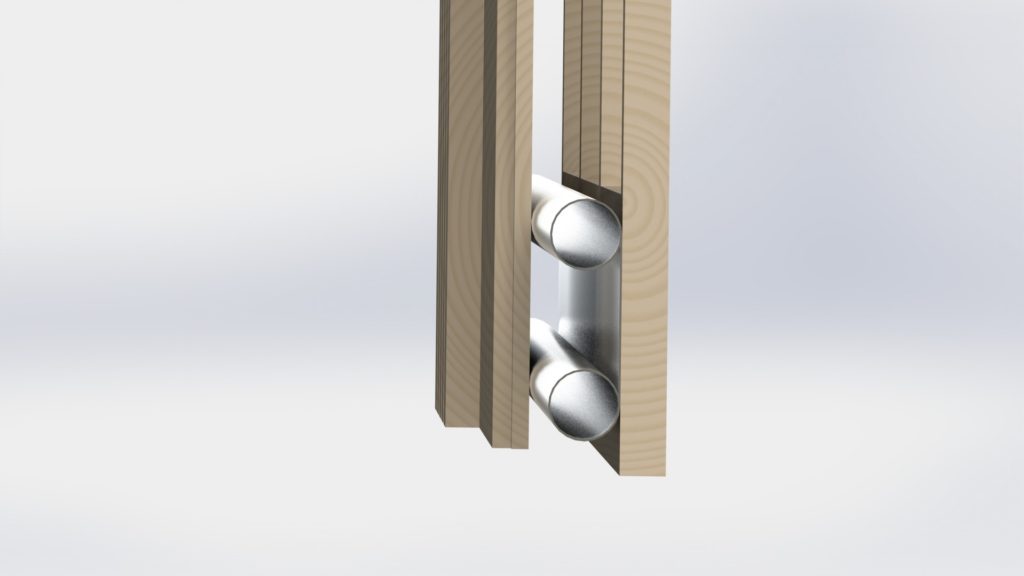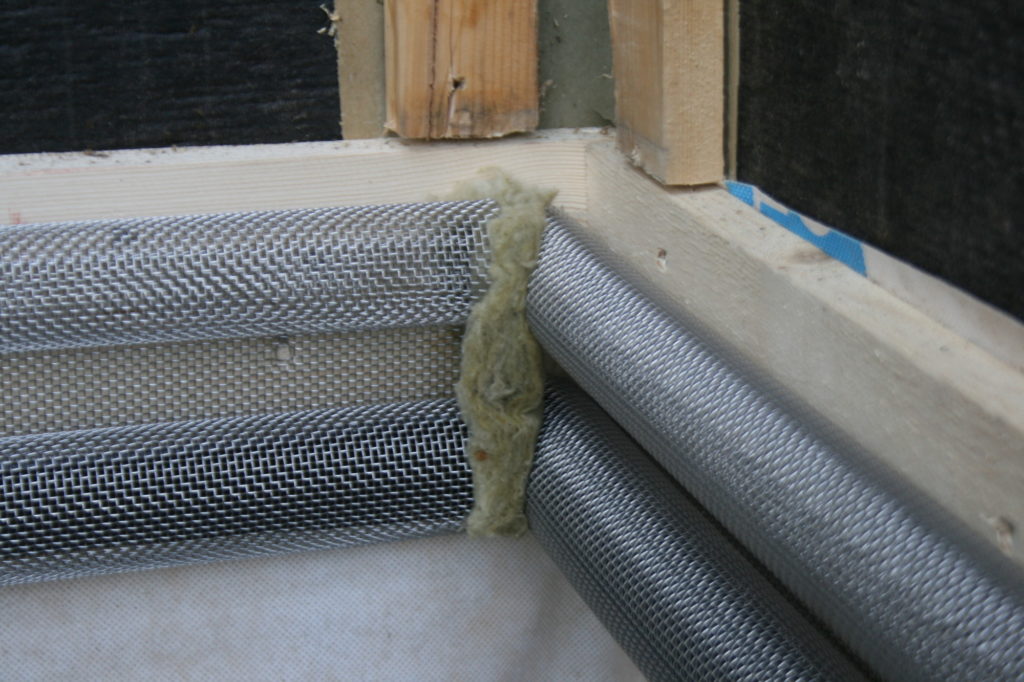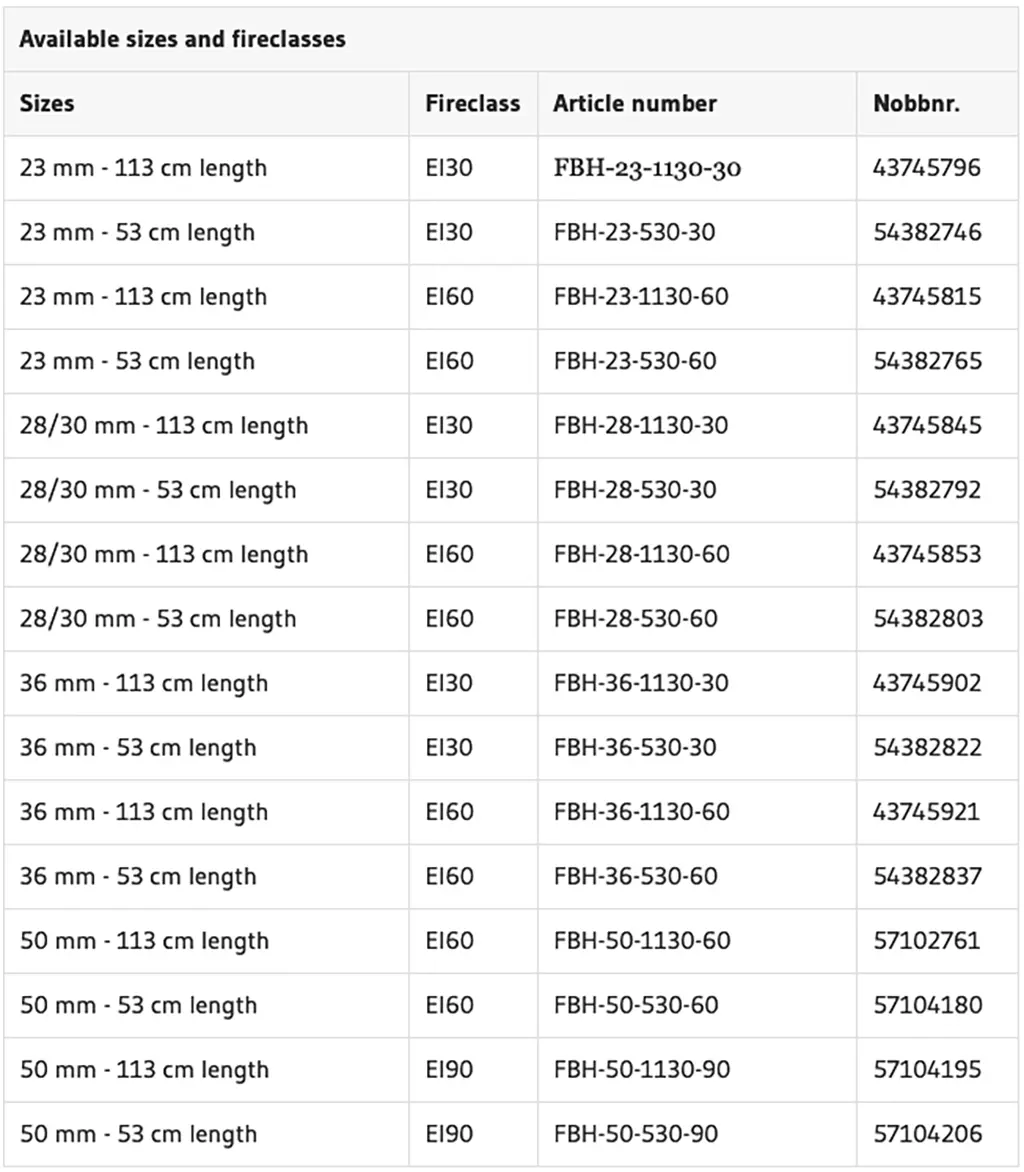Firebreather
Firebreather® Cavity barrier allows compartmentation of the cavity behind the façade cladding and hence prevent the spread of fire.
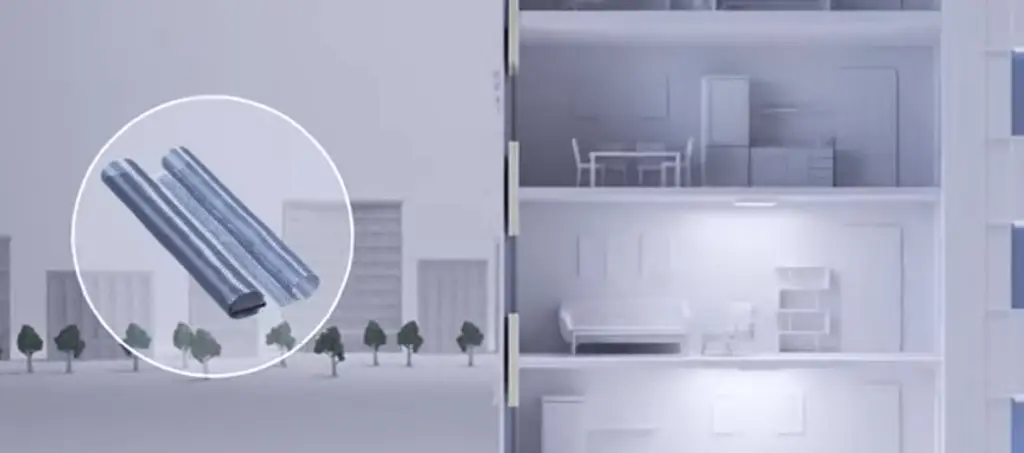
Protects against direct flaming, leap frog fire, sustained fire, deflagration of ignition of un-burnt gas.
With FB Cavity Barrier, Securo has developed a new set of applications specially designed for establishing vented fire barriers in voids or cavities behind the cladding on façades or inside fire rated walls and floors.
Click here to see documentation and installation guide.
FB Cavity Barrier provides ample ventilation of construction, yet instantly prevents fire from spreading. These are the only products available for uncompromising fire safe venting of voids and cavities in constructions.
The cavity barrier does not close the cavity when it is installed, but allows the necessary venting behind the façade cladding. In the event of a fire, the product closes the air gap and prevents fire from spreading.
FB Cavity Barrier is a fully passive vent design, i.e. it contains no moving parts, no detector activating system, and no cabling.
The fire barrier protects against direct flaming, leap frog fire, sustained fire, deflagration of ignition of un-burnt gas to the protected side.
The FB Technology employs multiple mechanisms of heat transfer blocking of fire to instantly prevent fire spread. No ignition will be possible at the unexposed side from the first millisecond throughout the fire rating period.
The design maximizes convective heat transfer by hot gases to solid surfaces. As hot gases are cooled, intumescent material is heated accordingly. Solid components act as secondary heat sinks efficiently cooling the smoke temperature below ignition temperatures of typical fuels until intumescent sealing is completed. Insulating parts and air gaps are carefully designed for thermal break performance.
The FB Cavity Barrier are made solely from non-corrosive materials and do not need any routine testing or maintenance to ensure that they perform satisfactory in case of fire.
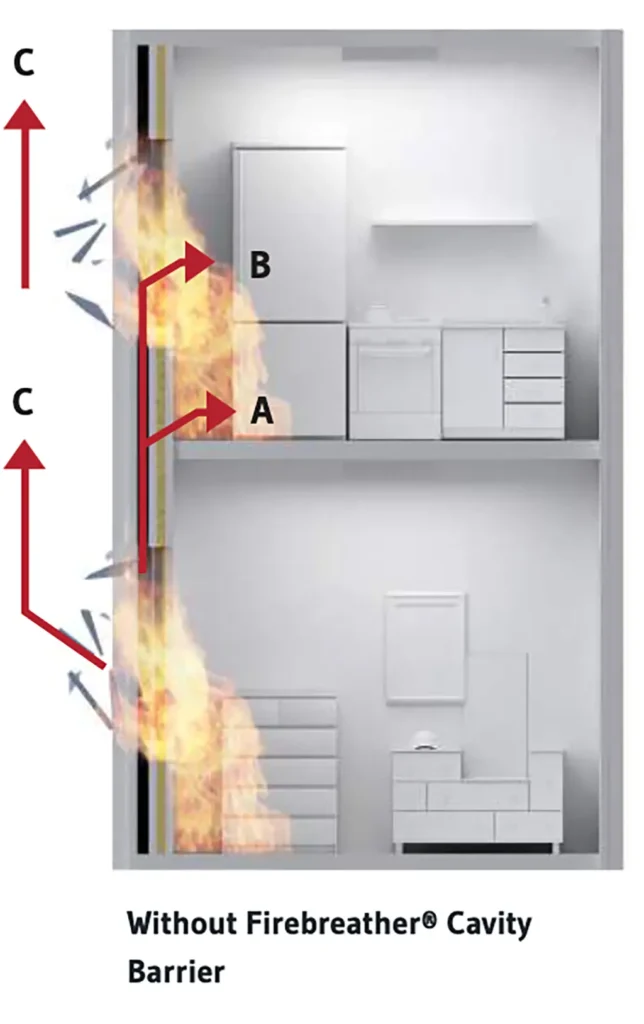

WHY USE FB CAVITY BARRIER
- Solves the need for firesafe venting in an easy and cheap way
- Ensures necessary venting
- Instantly blocks fire spread in cavities
- Fully passive
- Long lifespan
- Easy assembly
- Fire resistance EI30 / EI60 / EI90
Read more about fire resistance classes
TEST STANDARDS AND METHODS
- EN 1366-4:2006
- ASTM2912 – Sudden Direct flame test
- NFPA285 facade test
- TDG19 – Third party
- SP105 facade test – Third party
- Lepir2 façade test – Third party
- BS8414 facade test – Third party
FB CAVITY APPLICATIONS
- Behind ventilated façade cladding
- Vents in the roof / attic
- Floor separates
- Other cavities in the structure
FB CAVITY BARRIER COMBINES
- Necessary ventilation
- Fire cell limiting construction
- Prevention mice and pests from entering the construction
ENVIRONMENT – NORDIC ECOLABELLING
FB Cavity Barrier is listed in the database for building products that can be used in Nordic Swan Ecolabelled buildings.
The Firebreather® Cavity Barrier is the only product on the market that has the ability to instantly stop the fire from spreading in the air gap behind the cladding in a facade.
Firebreather technology consists of a unique combination of a flame arresting element, a heat absorbing and accumulating element that extends the flame arresting effect, a thermal bridge that prevents the products becoming too hot on the unexposed side and a grid of intumescent that completely closes the product in minutes.
This makes the Firebreather® technology unique:
- A flame arresting element that works from the first millisecond. >
- A heat absorbing and accumulating element that extends the flame arresting effect for up to five minutes. >
- A thermal bridge that prevents the products from becoming too hot on the unexposed side. >
- A grid of intumescent that completely closes the product within a couple of minutes.
FIRE SAFETY FACADES
The chimney effect in ventilated facades must be taken in account in the design phase. Fire can spread up to 8 meters per minute behind the cladding. Good compartmentation and the use of Firebreather Cavity Barrier will mitigate fire spread.
COMPARATIVE VIDEO
Test done to compare our cavity barrier and a competing cavity barrier.
Securo cavity barrier is installed on the two films to the left side, while the competing product is installed on the two films on the right side.
While we see that our cavity barrier stops the flames from the first second, we see that the competing product let flames pass through for quite a long time before it closes.
During this period, fire will spread throughout the cavity and ignite any combustible material and even if it is only non-combustible materials, the chimney effect can result in fire spreading upwards through the opening at the top of the cavity.
.

